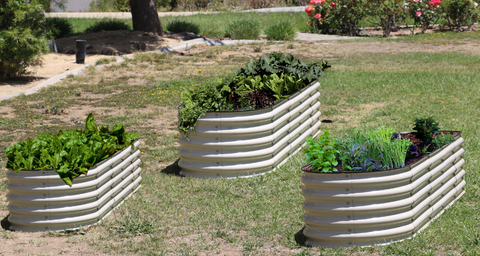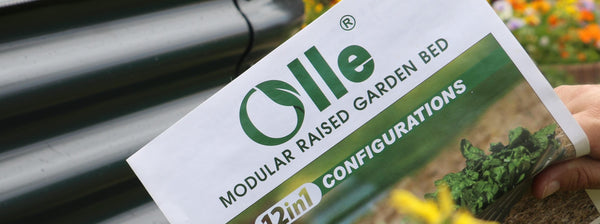5 Tips from Olle Garden Bed for Winter Gardening
Once the temperature starts to drop, gardening may not be your priority. Because many plants are dormant, you don't need to pull up weeds or water the garden often. However, you can use winter to prepare a garden for spring and enjoy the lush green space. The following content also has some reference value for raised garden beds.

Learn important tips for maintaining and preparing winter gardens.
- Pruning plants
Winter pruning is critical to the health of many plants, as it promotes productivity and growth in warm months. In addition, when there are fewer leaves on branches and stems, it is easier to reshape plants or curb the spread of disease and damage.
Flowering Bush
The best time to prune many flowering shrubs is at the end of winter, about January or February, before new leaves sprout. Since there are no leaves on the branches, you can easily create even, round shapes to achieve amazing flowers in spring.
Fruit tree
You should also prune some fruit trees, such as pear and apple trees, in dry and frost free weather when they are dormant - late winter or early spring is good. Remove dead or broken branches to increase air flow and light penetration through other branches and crowns.
A warning; It's easy to over trim a tree. Therefore, before cutting, walk around the tree to decide which branches need to be removed and which branches are most suitable for new growth.

Tips for winter pruning
Pruning on dry and mild days, because wet and cold conditions will cause waterborne diseases to spread among plants
Avoid early pruning of shrubs and shrubs in winter, as subsequent freezing temperatures will dry the cut.
Cut branches and stems at nodes that connect to the main branch.
However, some plants you should not trim in winter, including mop hydrangea, lilac and cherry trees.
- Planting flowers
If you want an elaborate garden with rows of beautiful flowers in warm months, you can plant some flowers at the beginning of the year. There are many kinds of flowers that need lower temperatures to germinate.
The flowering seeds labeled with cold tolerance, perennial and cold stratification are ideal for winter sowing. These include the bachelor button, forget me not, poppy, Columbine and goldfish.
One of the easiest ways to sow winter seedlings is to take a transparent plastic bottle or kettle, cut them in half, and then use scissors to poke holes in the bottom. Fill these with a good potting mixture, water a lot, and then sow. Finally, replace the upper half of the container without the cover and stick it in place. Keep it in a place exposed to a lot of sunlight and rain.
- Harvesting winter vegetables
If you like to eat your own organic vegetables all year round, you can plant some vegetables in late spring or early summer and enjoy them in winter.
Cold resistant winter vegetables such as cabbage, winter cabbage, broccoli, brussels sprouts and leeks take several months to mature and can withstand cold weather and frost. Therefore, you can enjoy green leafy vegetables in cold months.
You can also plant leafy crops such as parsley, beets and sesame seeds in early summer for harvesting in late autumn or early winter. However, these plants need some protection from the cold. Therefore, cover them with cold frames, wool or bell shades to increase their chances of survival and prosperity.

- Take care of wild animals
Winter can be difficult for birds because they lack food and water to pick from the ground. If you have feelings for these local feathered and winged creatures, you can omit bird feeders and water baths.
Make sure to keep the seeds fresh by changing wet food and adding more seeds every day. You can also place a roof on the feeder to protect food from rain and snow, and provide shelter and habitat for birds. If there is a pond near you, you can break the ice on it to provide water for birds.
- Spring plan
Winter is the best time to imagine how you want the garden landscape to look for spring. Evaluate your yard, plan the location of flowers and vegetables, and decide whether to include new fixtures, such as trails, pavilions, or waterscapes. Planning ahead will enable you to enter the new season with clear goals, and you can start immediately.
Your winter garden is almost ready!
There are many things you can do around the garden in winter to prepare for the rest of the year. You can trim trees and plants to stimulate new healthy growth. Or, plant the flowering seeds to get beautiful scenery, harvest winter crops, and plan for the future.
